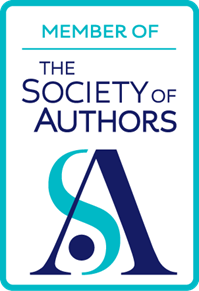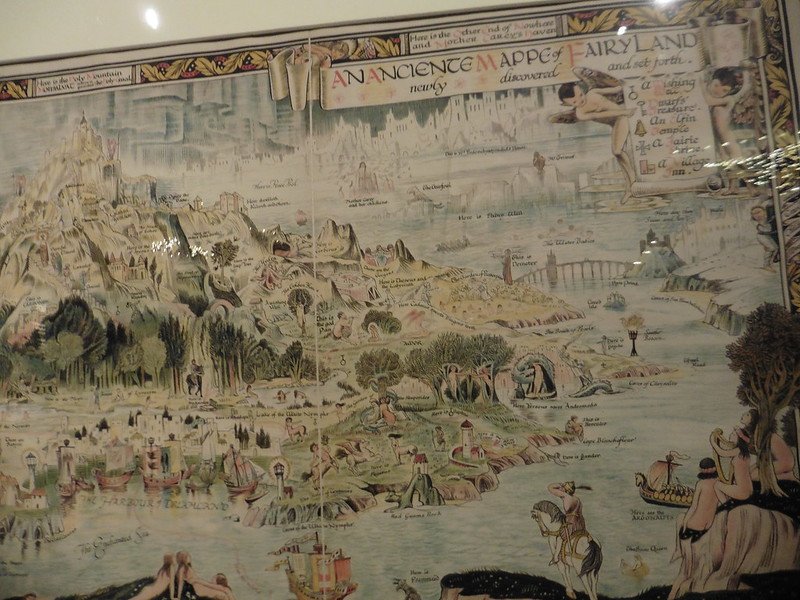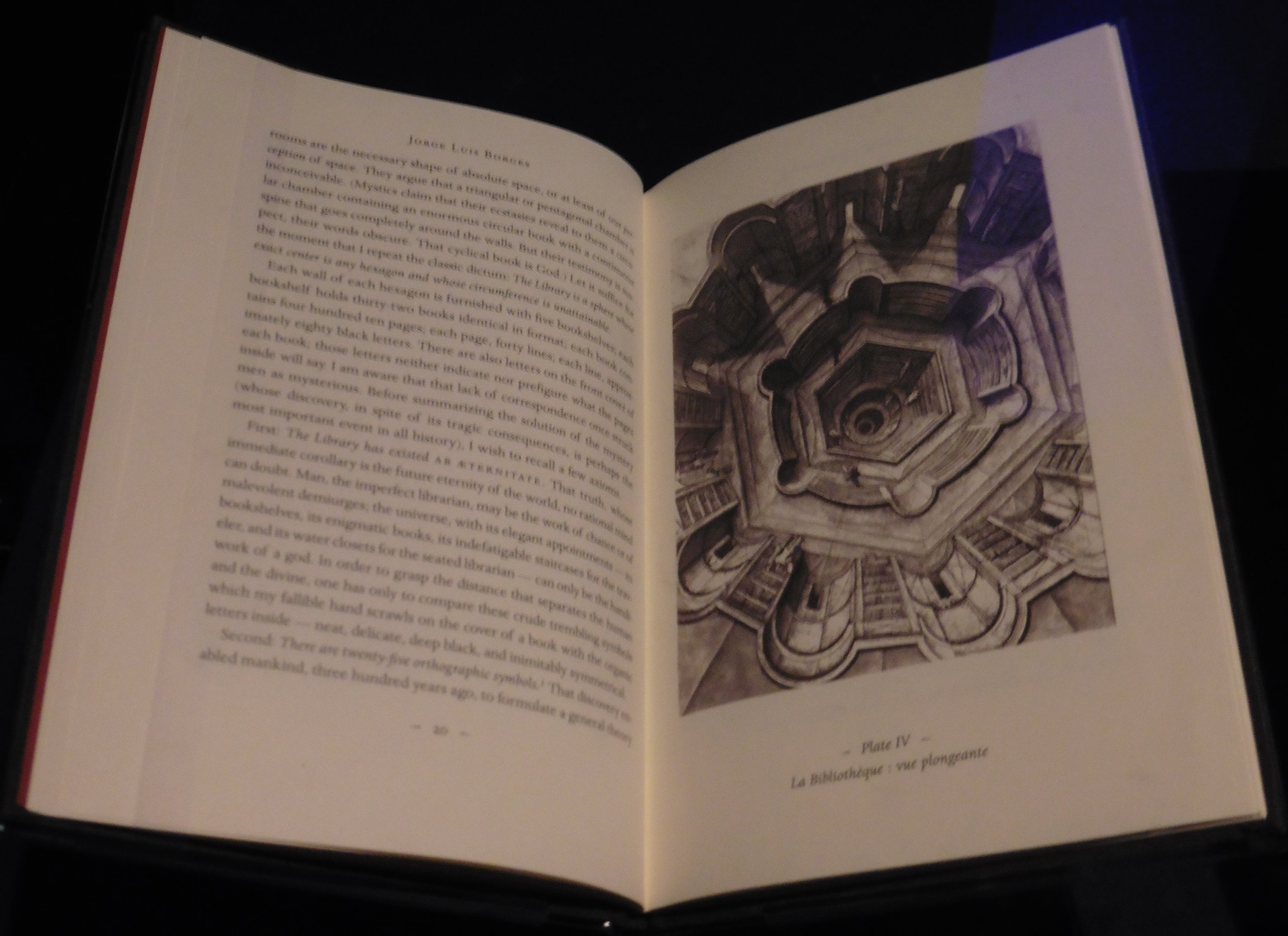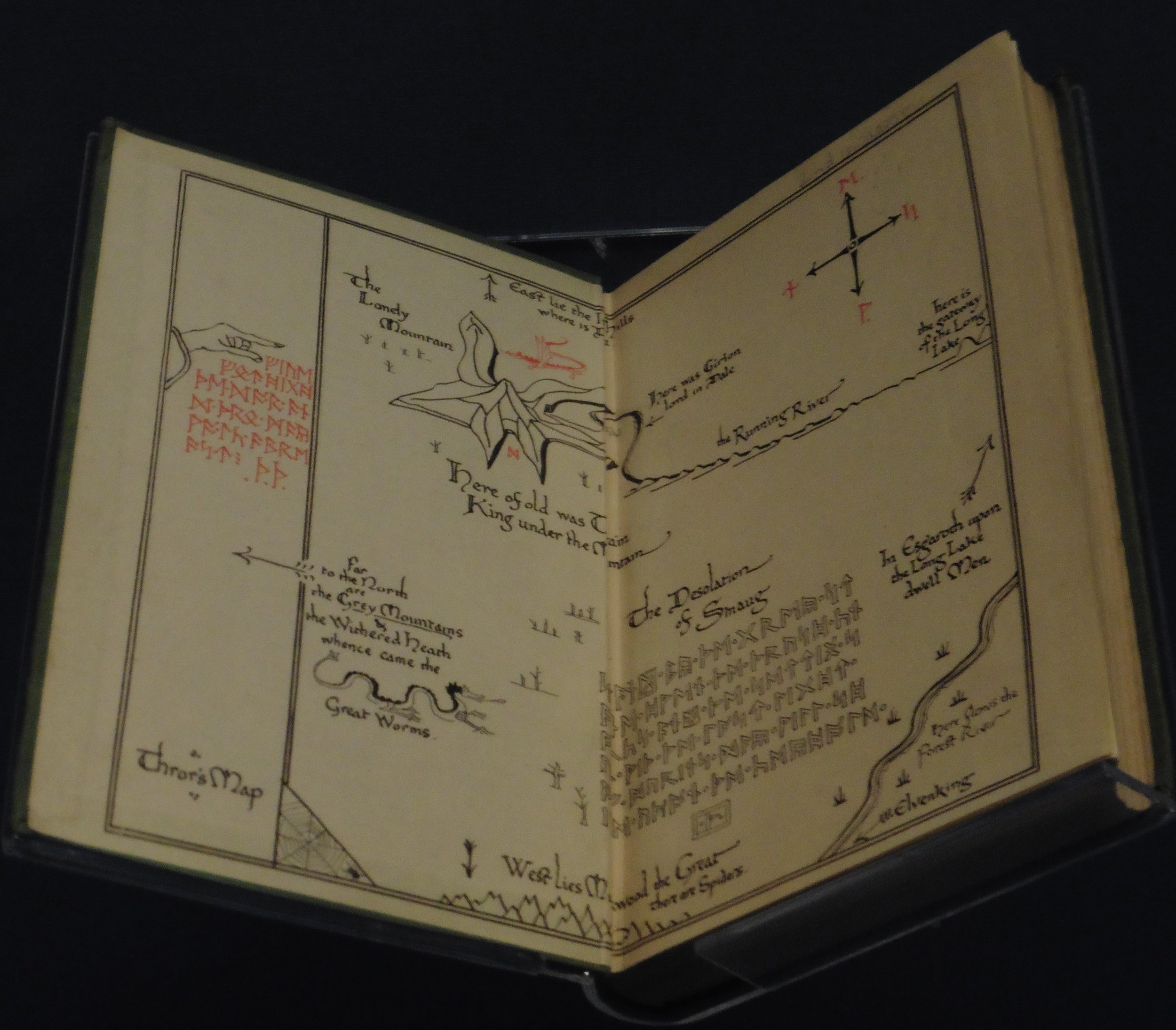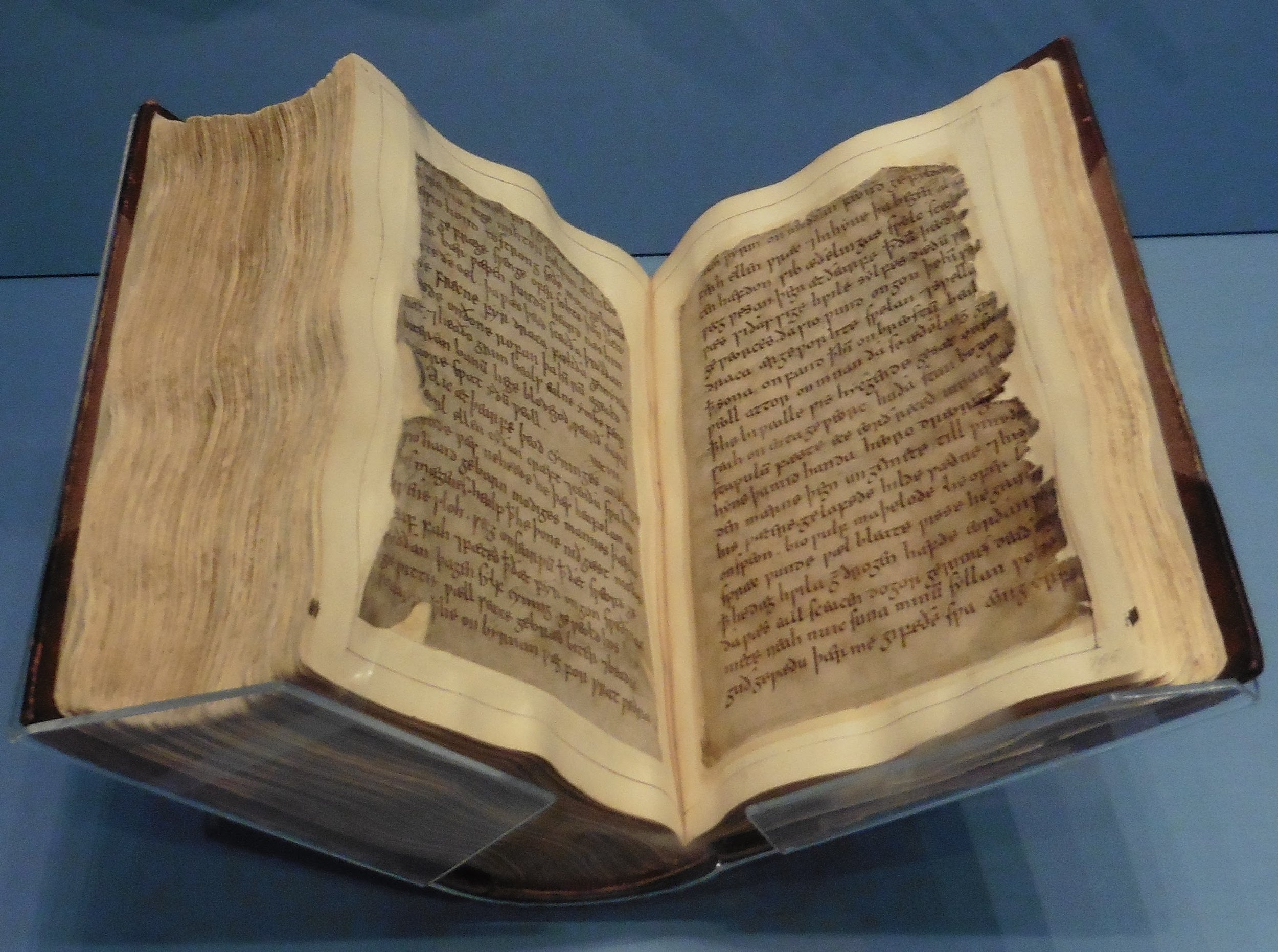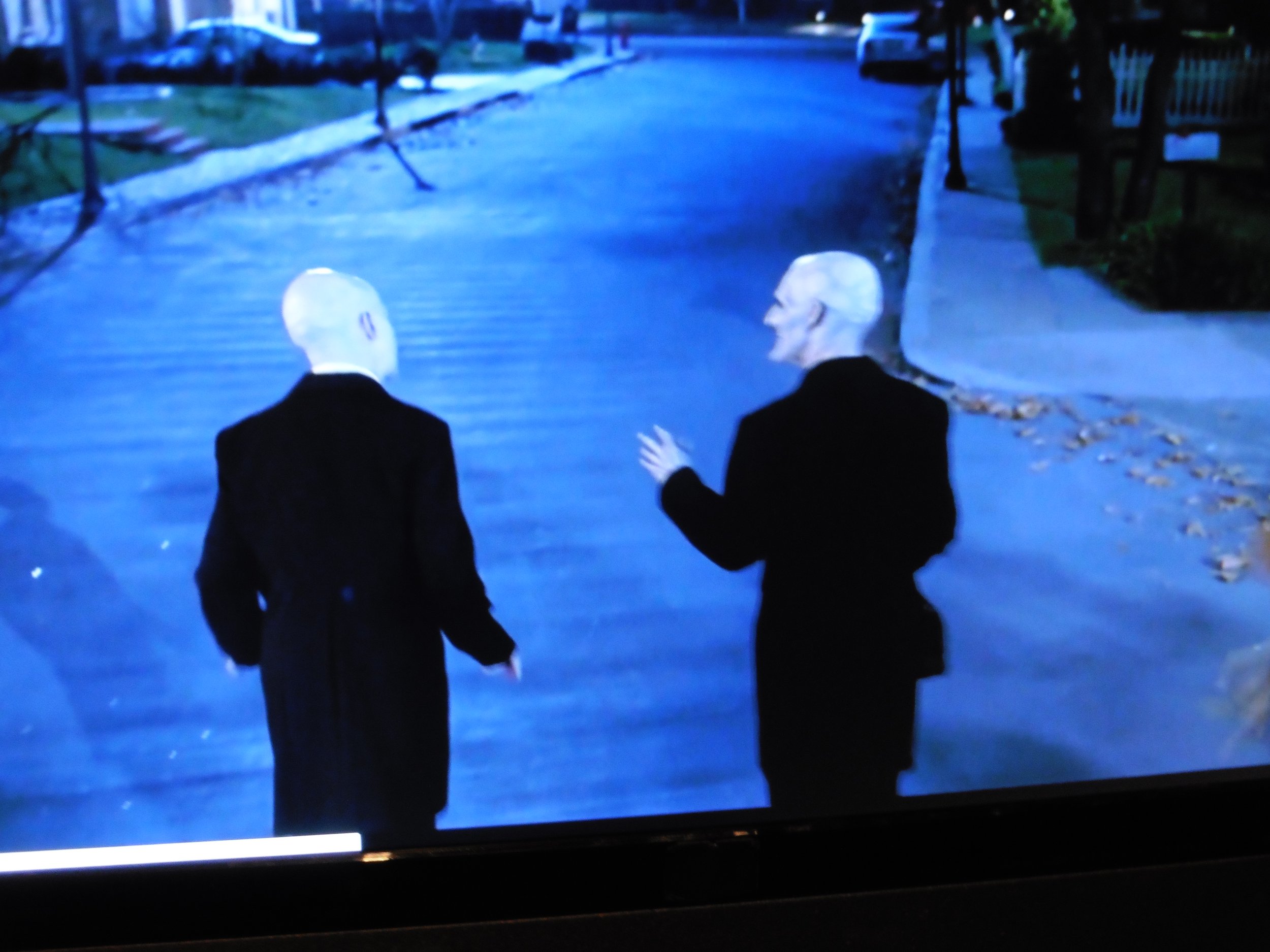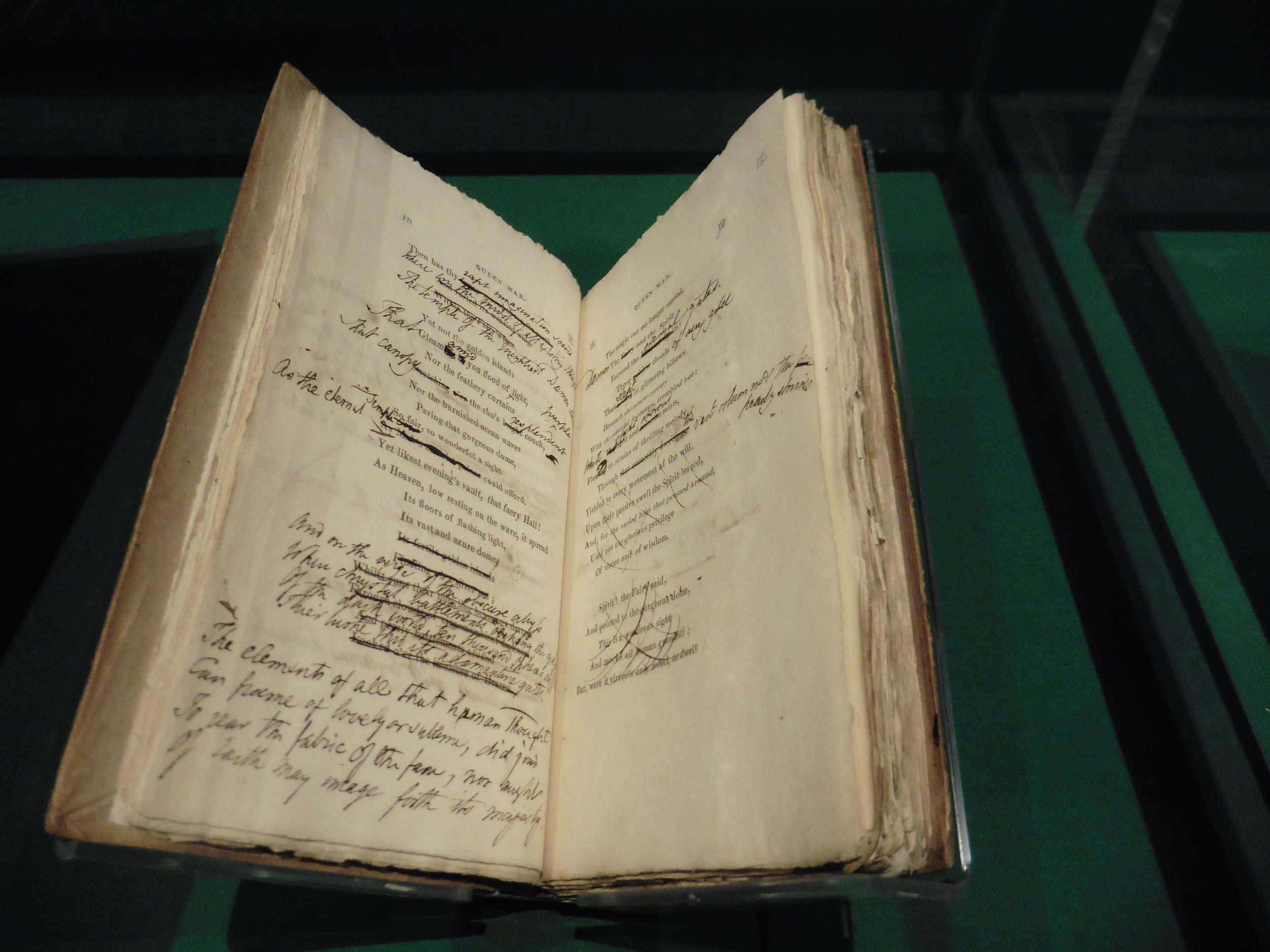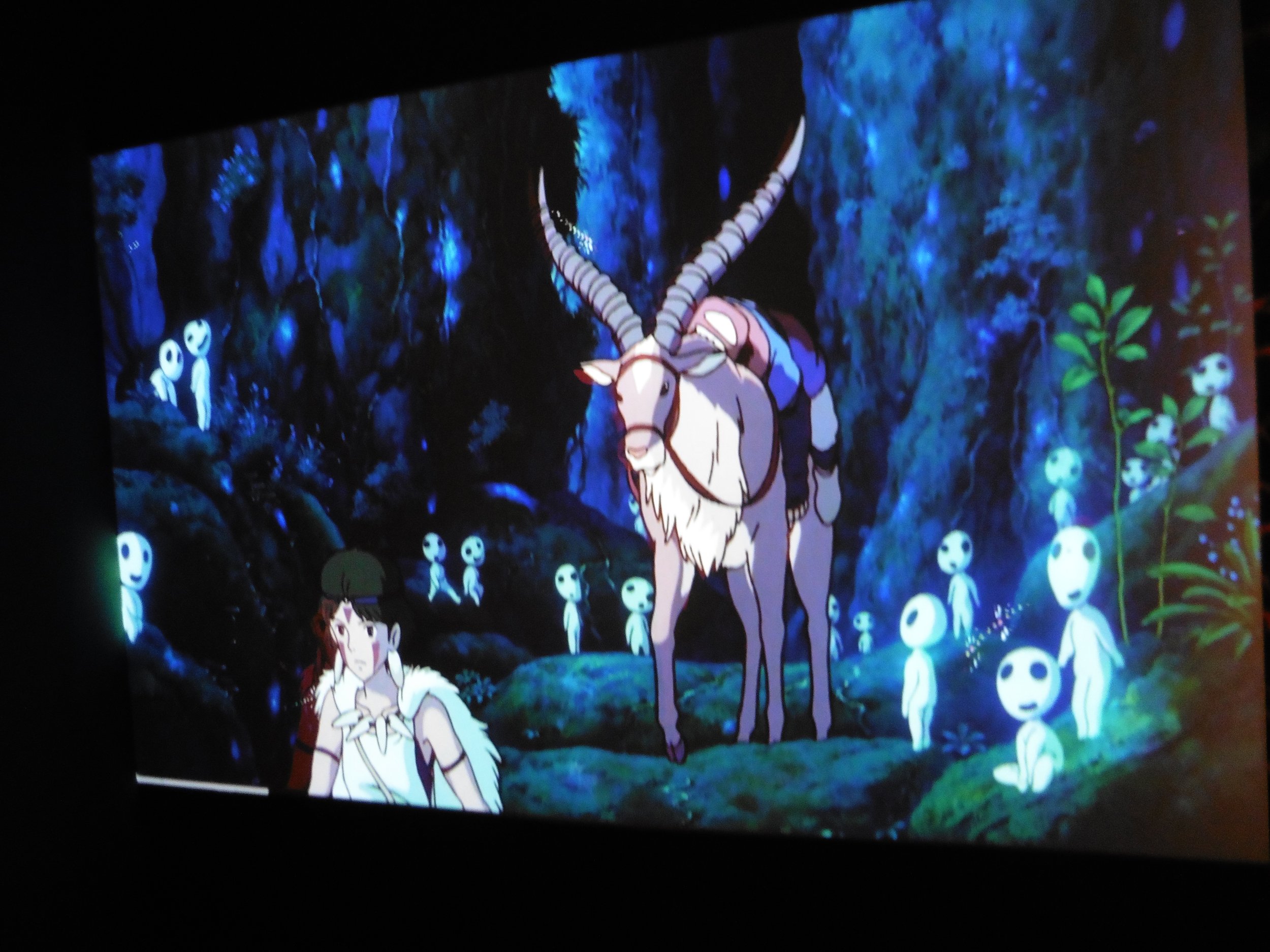The British Library exhibition and book
Exhibitions can be sources of surprise as well as enlightenment, and for me the biggest surprise when I visited this exhibition was discovering that I like works of fantasy. The shelves in libraries or bookshops labelled Science Fiction and Fantasy interest me only for the former, not the latter. Games like Dungeons and Dragons have never appealed to me, and much as I like maps and strange lands, the works of Tolkien leave me cold.
However, the exhibition revealed to me that my conception of what constitutes “fantasy” was rather narrow. For example, the story of Sir Gawain and the Green Knight is classified as fantasy, a member of the “quest” genre. I’ve been fascinated by the story, and the debate over its authorship, for decades – ever since I first heard of it while studying the Prologue to the Canterbury Tales.
Similarly, the works of Borges, one of my favourite authors, ticks at least two of the boxes into which the exhibition is organised: portals and worlds (The Library of Babel, for example), and weird fiction (Tlön, Uqbar, Orbis Tertius).
The other two sections in the exhibition are Epics and quests, and Fairy and folk tales. One of the exhibits in the latter category is Christina Rossetti’s poem ‘Goblin Market’. That is another work I’ve enjoyed without making the obvious connection to fantasy.
The most apposite description of the exhibition is, I think, sumptuous. There are film excerpts that are gorgeous and intriguing, beautiful books, costumes, interactive video games, and interviews with authors, for example Neil Gaiman.
Another facet of the exhibition was the inclusion of documents containing their authors’ and writers’ notes and directions.
Here are a few photos to give you a better idea of the richness of the experience.
From top left going clockwise:
An Ancient Mappe of Fairyland, by Bernard Sleigh.
The Library of Babel, illustrated by Erik Desmazières.
Carceri etching, by Piranesi.
Illustration from The Hobbit, by Tove Jansonn.
Beowulf.
Screenshot from Buffy the Vampire Slayer.
Shelly’s handwritten annotations of his poem Queen Mab.
Screenshot from the animated film Princess Mononoke.
There is a book to accompany the exhibition, a supplement and compliment rather than a catalogue of the works included. It comprises a number of essays which are both informative and enjoyable to read. Before reading the book I had no idea that folk tales and fairy tales are different from each other, that the terms “folk” and “fairy” in this context are by no means synonymous.
The book also draws a connection between the sketches of Piranesi (illustrated above) and the Library of Babel, which I immediately thought of myself when I saw the Piranesi sketch. I could not help wondering if Escher had drawn some of his inspiration from Piranesi, but there is no mention of Escher at all. I found this strange, because, like Piranesi, Escher drew impossible architecture.
An unfortunate aspect of the exhibition is the placing of the information panels. These are low down and difficult to see and read when more than two or three people are looking at a particular work. It would have been much better to place these panels higher up, and with larger print. And why not have books containing large print labels that visitors can carry around with them?
The intricate details of some of works are hard to see anyway, and it would have been a good idea to project slides of them onto a wall.
On the whole, though, the exhibition is both informative and enjoyable, and definitely worth an hour and a half of your time.
This fascinating exhibition finishes on the 25th February 2024. You can purchase tickets for it here.
This article first appeared in my Eclecticism newsletter, in which I write about writing, reading and life. Do have a look. Eclecticism.
